Alert from the Northern Lights: Sun's activity is at its highest level in 23 years with the Northern Lights
We're likely to see more Northern Light shows in the coming weeks and months — including this weekend — after detecting more sunspots on the sun during July 2024 than at any time since December 2001, scientists say. Sunspots are magnetic disturbances on the surface of the sun that can be as big as Earth. According to NASA, it has been counted every day since 1611, and indicates how active the Sun is. According to spaceweather.com, the average monthly number of sunspots for July 2024 reached 196.5, according to the Center for Solar Impact Data Analysis of the Royal Belgian Observatory. This comes after a week of "photographic shows" of North American Northern Lights, which now seem likely to be repeated this week.
Recommend
Counting sunspots

Sunspots are the source of solar flares on the Sun, which are often followed by coronal mass ejections. A solar flare is an intense burst of radiation from the sun that travels at the speed of light, taking only eight minutes to reach Earth. Solar flares can cause radio outages, but not the aurora borealis. However, coronal mass masses eject magnetic fields and charged particles into the solar system at speeds of up to 1,900 miles (3,000 kilometers) per second. If it travels toward Earth, it can cause geomagnetic storms – that's what causes the northern lights. It can take a few days to get to the ground.
These weekend offers
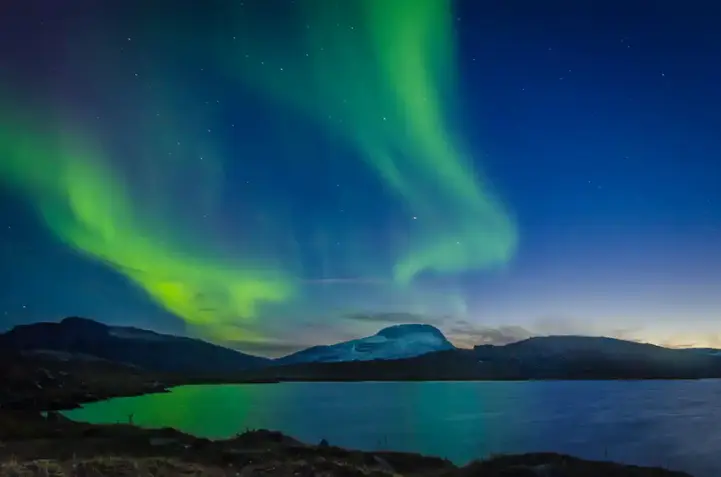
In the wake of an M8 solar flare, the Earth-oriented CME is expected to reach Earth this week, potentially triggering a G2 class geomagnetic storm, according to the National Oceanic and Atmospheric Administration's Space Weather Prediction Center. G2 storms can generally be seen as far south as New York and Idaho; for G3, it's Illinois and Oregon; for G4, it's Alabama and Northern California. For the latest updates, check out the Space Weather Predictoris Center's latest "Northern Lights Line of Sight," which represents the southernmost locations from which you might see the Northern Lights on the northern horizon. The May 10 severe geomagnetic storm G5, which caused Northern Lights shows around the world, was classified as G5 – the highest possible level. That's not what's happening this week.
Solar cycle 25
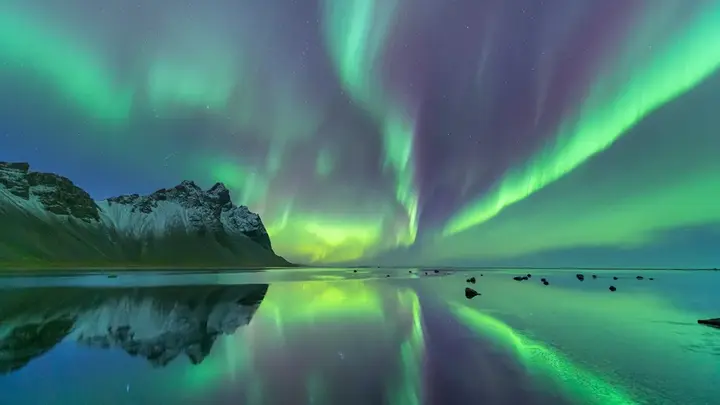
The Sun has a solar cycle of about 11 years, in which the Sun's magnetic activity increases and decreases. It is now on the cusp of "maximum solar activity" – the period of its peak activity – which is determined by the calculation of sunspots on the surface of the sun. We are currently in the 2025 solar cycle, which started in 2019. However, while May saw the highest number of sunspots since December 2001, the 2024 solar cycle peaked in July 2000 when 244.3 sunspots were calculated, according to the SWPC. This suggests that the 2024 solar cycle may become more intense, although the latest SWPC forecast is the maximum occurrence between August 2024 and January 2025.
What causes the Northern Lights
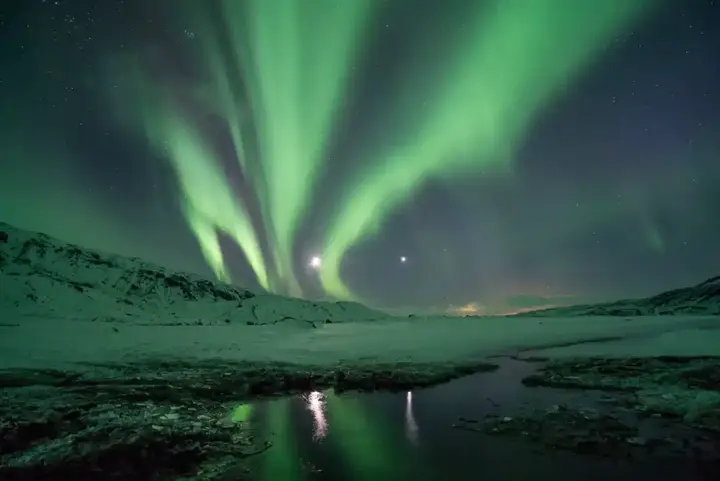
The aurora borealis is caused by the solar wind, a stream of charged particles from the sun. When they collide with Earth's magnetic field, they accelerate along magnetic field lines at the north and south poles to form green and red ovals. They are usually visible to those who live near the Arctic Circle, such as Alaska, northern Canada, or northern Scandinavia (Norway, Finland, Sweden, and Iceland). However, if there are many solar flares and coronal mass emissions, the solar wind can become more intense, with those ovals extending to the south. When that happens, those in North America can sometimes see the northern lights in the form of a faint glow on the northern horizon.
What causes the movement and shape of the aurora borealis?
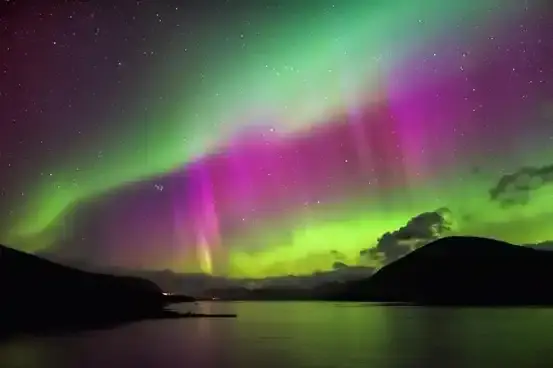
Constant changes in input from the Sun, diverse responses from Earth's upper atmosphere, and the movement of planet and particles in near-Earth space have all combined to cause different motions and shapes of the Northern Lights. Through these movements and shapes, we can learn about the physics that occur in space along Earth's magnetic field lines.
What does the Northern Lights tell us about the Earth's atmosphere?
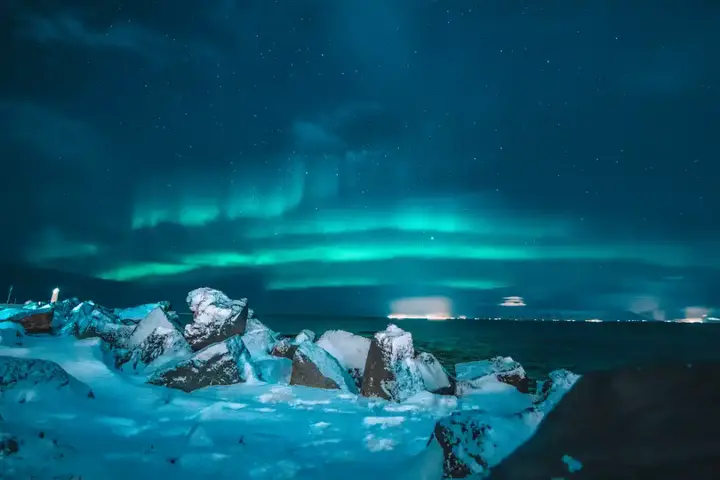
The aurora borealis tells us many things about Earth's upper atmosphere, including its density, composition, flow velocities, and the strength of electric currents flowing into the upper atmosphere. This, in turn, tells us about Earth's magnetic field, how it extends into space, and how it changes dynamically. All of this is important to protect the Earth and spaceborne technologies from the dangers of "space weather" of which the Northern Lights are a part.
Do we have aurora borealis on other planets?
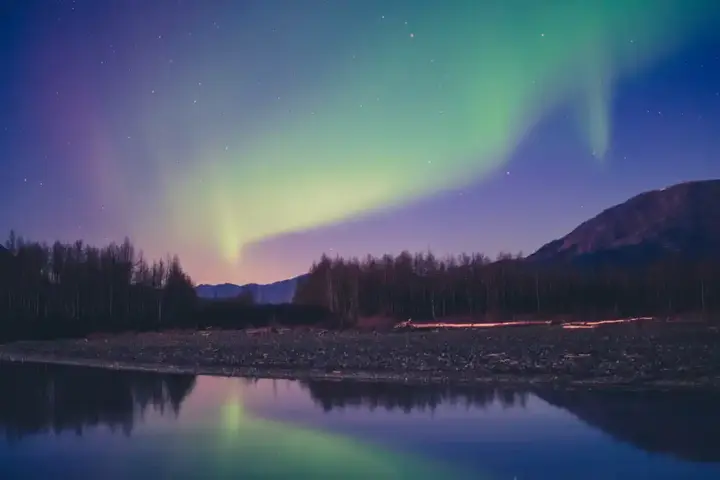
Yes! Northern lights refer to planets with magnetic fields and atmospheres, which are very different compared to Earth.
What is the best way to photograph the Northern Lights?

Smartphone cameras are sensitive enough to capture the aurora borealis, even when it is invisible to the naked eye. Visit Iceland, a tourist site in Iceland, where lights are often visible, advises turning on night mode to increase the exposure of the smartphone's camera.
![]()
Why do some people attract mosquitoes like magnets, others don't?
Why some popele are Mosquito Magnet, some NOT? more- ADVERTISEMENT
![]()
The concept of financial liberalization - how can you achieve it?
The Financial Freedom Concept - How can you achieve it more- ADVERTISEMENT
![]()
Simple ways to ascertain the nature of the curved ground
You don't need fancy tools or deep science to see Earth's curve—just use your camera, observe buildings, watch ships at sea, enjoy a flight, explore space photos, witness an eclipse, or study ocean tides. These simple experiences reveal the beautiful, curved nature of our planet in creative and exciting ways. more- ADVERTISEMENT
![]()
Why is um Kulthum known as Our Lady of Egypt?
Oum Kulthum, known as the "Voice of Egypt" and the "Star of the East," captivated millions with her powerful voice and poetic songs. For decades, her live radio concerts united the Arab world, and her legacy still echoes in Egyptian identity and culture. more- ADVERTISEMENT
![]()
Success Guide - How to discover your passion?
Discovering your passion is a personal journey that brings meaning and joy to life. It’s about finding what excites you, motivates you, and makes you feel alive. With patience, reflection, and trying new experiences, you can uncover what truly inspires you without needing to spend a fortune. more- ADVERTISEMENT
![]()
How periods of consistency guided me to the goal: your actions are your compass
How Periods of Consistency Guided Me To Purpose- Your actions are your compass more- ADVERTISEMENT
![]()
How do I increase my confidence at work? Proven practical tips and exercises
Self-confidence helps you speak clearly, connect better with coworkers, solve problems, and grow in your career. It's a skill you can build with small steps—know your strengths, improve communication, stay positive, take care of yourself, and reward your progress. Confidence is a journey, not a destination. more- ADVERTISEMENT
![]()
Hospice of the King's Assistant... Masterpieces of art and color harmony in Kermanshah
The King’s Assistant Hospice in Kermanshah, a Qajar-era gem, shines with vivid tiles and graceful arches. Built for religious ceremonies and tribal reconciliation, it also holds tales of conflict, peace, and deep-rooted Persian hospitality. Today, it stands as a museum and a beautiful reminder of cultural and spiritual legacy. more- ADVERTISEMENT
![]()
Best Graphic YouTube Design Learning Channels in Arabic
Noor Design Channel stands out by teaching design basics like color theory in a hands-on way, helping many Arabs become skilled designers. It also guides learners on turning design skills into freelance work, making it a top pick for Arabic-speaking beginners. more- ADVERTISEMENT
![]()
6 cheap electronic tools for an easier life
Boost your lifestyle with affordable tech tools like fitness trackers for healthier habits, e-readers for book lovers on the go, and smart trackers to never lose your keys again. Add entertainment with a TV Stick 4K and stay powered anywhere with travel adapters and rechargeable batteries. Simple, smart, and efficient! more- ADVERTISEMENT





















